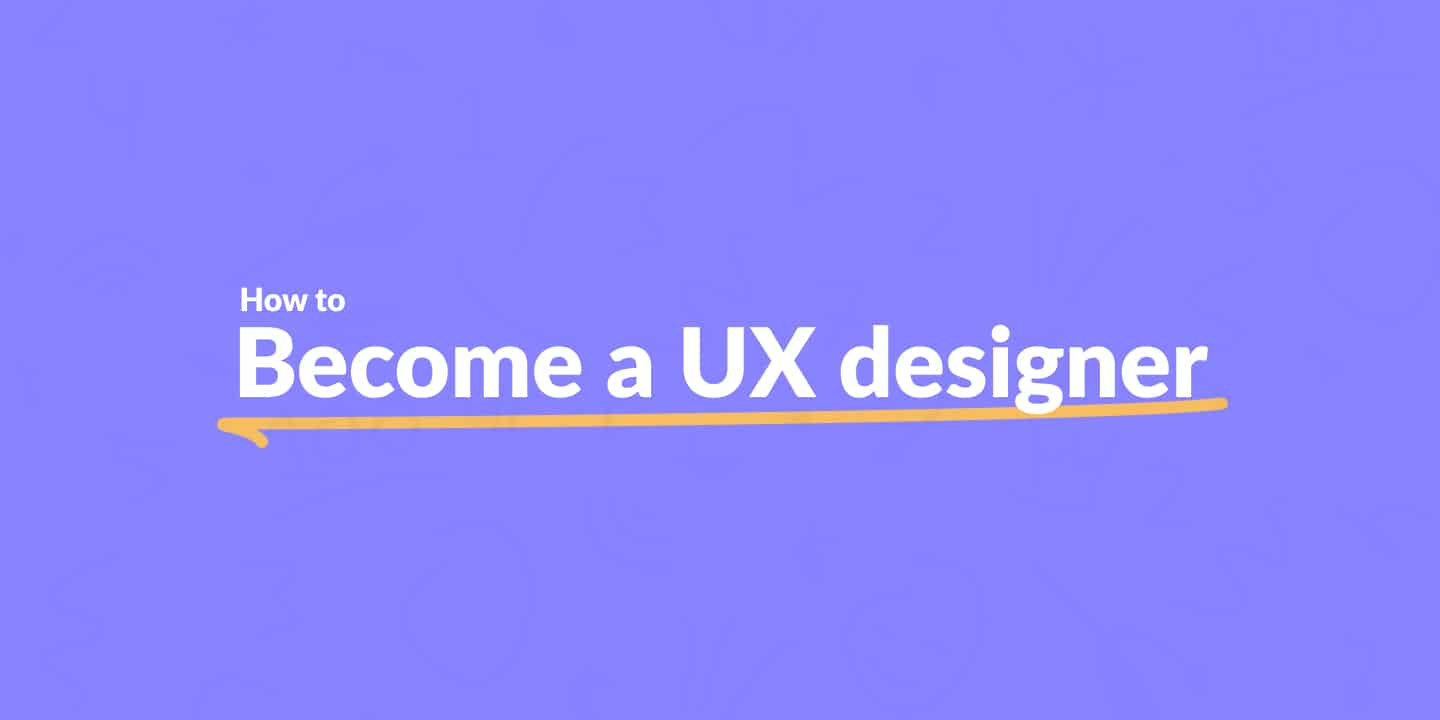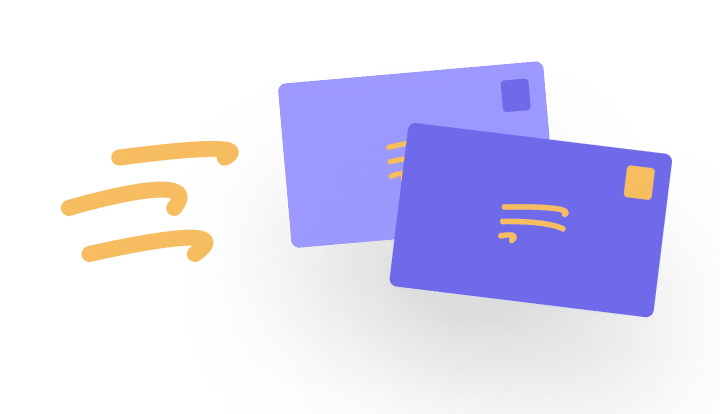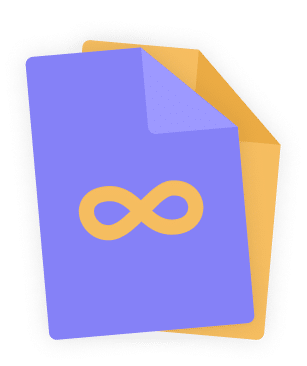👋 Great designs start with great feedback. That’s what Workflow is built for. Start today.
So you want to become a UX designer? That’s awesome! However, I can imagine that you might feel a bit overwhelmed. There’s so much information, courses, and books on UX. It is hard to keep a clear overview of what you need and how to start your journey to become a UX designer.
- Updated on January 3, 2024

To become a UX designer, you need to create a profile of who you are as a designer. That includes your hard and soft skills, previous experience (if you have that), and the services you offer.
Luckily, there’s a step-by-step approach to becoming a UX designer. Here are the steps that we’re going to talk about.
- Learn design hard skills and soft skills.
- Learn commonly used UX tools.
- Build your UX portfolio and resume.
- Start projects to gain experience.
Table of Contents
How to become a UX designer
Becoming a UX start with creating your UX designer profile. Before you get started, it is essential to take an objective look at the progress you’ve already made before starting this guide.
For example, you could have experience in a different (design) field, which means you have some proficiency with tools, a resume, and some experience.
That’s good, obviously. It’ll make some of the coming steps easier for you to complete. However, we’ll look at each category as if you’d have to start from scratch.
Learn design hard skills and soft skills
You can divide the skills you need to learn for UX into hard skills and soft skills. Start with learning hard skills, as you can do that in your own time.
Hard skills
Hard skills are skills that you can improve through repetition and experience. They focus on the use of tools and abilities. In the case of UX design, examples of hard skills are your ability to use tools like Sketch or Figma, prototyping tools, or a user research tool.
Abilities like conducting a user interview or facilitating a design workshop are also hard skills you can learn to become a UX designer.
Soft skills
Soft skills are less tangible than hard skills. For example, you can learn Figma by practicing a lot, but it is far more challenging to learn strong stakeholder management.
Soft skills are also known as ‘people skills.’
In addition to stakeholder management, other soft skills you need in UX include communicating, providing advice, collaborating with clients, and more.
How to do it
The main way to improve your skills is by practicing. Hard skills are easier to improve than soft skills. There are many tutorials available online to improve, for example, your skills in Sketch.
Another way of increasing your skills and knowledge is by joining UX bootcamps or courses. These are expensive but can be of great value. You have to determine for yourself to see if they are worth it for you.
Learn design tools
Just as a painter needs a brush, UX designers need tools. Your complete set of design tools is what we call a ‘stack.’ This is something that originates from the world of development but works for design as well.
As a designer, you need the following set of tools.
- Vector-based UI design tools, like Figma, Sketch, or Adobe XD.
- The Adobe Creative Suite. This includes the likes of Photoshop, Illustrator, and Adobe XD.
- Research tools, like Miro or Lookback.io.
- Collaboration tools, like Zeplin or InVision.
Most UX design jobs require you to be proficient with at least one of the UX design tools from this list. Let’s take a look at how to get started.
How to do it
Theoretical knowledge of design tools will only get you so far. You will learn the most from actual practice.
This is one of the benefits of being a designer. You can design anything you want, whenever you want, and wherever you want. Here’s how you can practice your design skills.
- Follow online tutorials on Youtube. After you’ve watched a few, you can combine what you’ve learned into a design of your own.
- Design something you wish you had, like a great app idea, your dream car, or something else entirely.
- Redesign a famous brand or something you like. Did you order something recently, but didn’t the application feel right? Redesign it! It is excellent practice and something you can also add to your portfolio.
Your UX portfolio and resume
UX is a very portfolio-driven place to work. Most people agree that having a strong UX portfolio is more important than having a degree or formal design education.
In 2024, creating your UX portfolio is a big part of becoming in UX designer.
To help you out, we’ve created a post that provides you with creating your UX portfolio. The post includes answers to frequently asked questions as well as everything you should include and how to make that happen.
Then there’s also your resume. The most important thing to do for your resume is to keep it simple. That’s because recruiters only take a brief look at your resume, so you need to make sure they see right away what you’re all about.
Making your resume too complex is something you should avoid at all costs.
How to do it
You’re almost ready to apply for your first internship or traineeship. But first, you need to create your resume. Here’s my list of UX resume tips.
- Use a one-column design. It makes your resume a lot easier to read.
- It is not necessary to keep your resume on one page. This is an outdated requirement.
- Start with a short bio about yourself and add experience, education, tools, and skills in that order.
Creating your UX portfolio might seem daunting at first, but it isn’t if you already have a resume. That’s because your portfolio website needs an about you page. You can use most of your resume for that.
What’s left is a case study or two, the front page, a contact page, and the first version of your portfolio is set.
During my mentorships, I’ve seen that mentees make the most progress if they work towards the first version of their portfolio quickly. After that, you can continue to work on your portfolio based on feedback from the community and recruiters.
Experience
Getting experience as a UX designer is as easy as it is difficult. Any work you do can count as experience, but getting a client if you have no prior experience is much harder.
You need work to get experience, but to gain experience, you need work. It is a difficult loop to get out of.
Don’t worry. You can get out of it. Here’s a list of things you can try to help you get experience as a UX designer.
Create your own design
You can improve a product you think needs improving or design something new for your favorite brand. It’s a good addition to your portfolio and something you can share online to build your network.
Find freelance clients
There’s always someone looking for a good designer. You may know someone from school, a family member, or a local entrepreneur that needs a new website.
Reaching out to freelance clients teach you valuable soft skills as well, which are very helpful when you continue your job hunt. It is a win-win for you.
Tips and tricks
Becoming a UX designer requires a step-by-step approach. The steps I’ve mentioned above can help you do that. And to make the process easier for you, I’m sharing some tips and tricks below.
Decide the design direction you want to move towards
To increase your chances of getting a job in UX, you first need to choose the type of designer you want to become. By doing so, you can focus your efforts on that one design job.
There are several options to choose from, including the following.
- User interface design, or UI design in short. It is about creating visual interfaces and layouts for applications, websites, and devices.
- User experience (UX) design. As a UX designer, you focus on designing solutions to complex problems by researching, creating concepts, designing interfaces, and testing your designs with users.
Because of the differences between UI and UX, your portfolio will look different depending on the direction you choose. UI designers will have a more visual portfolio, for example.
Apply for a UX traineeship or internship
You can only learn so much on your own. After some time, it is more valuable to you to go out and learn from others. Joining a traineeship or internship can help you become a better UX designer.
You can find a UX internship on mainstream job boards like Indeed and LinkedIn, but also specific Facebook or Reddit groups. Getting that internship works just like getting a job in UX. It involves writing a cover letter, sharing your portfolio, and acing your job interview.
Join a UX community
Being a part of a design community helps you to become a UX designer. You’ll meet designers that might be a few steps ahead of you. They can guide you through the career phase you’re currently in.
In addition, they can give you feedback and advice on your current designs and portfolio.
To facilitate this, we’ve created our very own Slack UX design community. Join today!
Get UX career advice
Becoming a UX designer is a lot of hard work. To help you out with this, you can send me your questions. Just fill out the form below, and I will get back to you. Free of charge. No strings attached!
If you want to take things one step further, consider our UX mentor or UX career coach services to help you become a UX designer.
Frequently asked questions
That’s about it. We’ve discussed the steps you need to take to become a UX designer. However, that doesn’t mean that this is all there is to say about this subject. We’ve covered a few more questions below.
Can you learn UX design on your own?
Yes, you can most definitely learn UX design on your own! Working on design challenges, reading a lot, and practicing your design tool skills will go a long way. Joining a class, bootcamp, or community is optional and up to you.
That being said, learning together with others does have its advantages. If you decide to learn UX on your own, you’ll need to do a few other things.
One of the main things you can try is to learn UX in public. Share your progress online by writing articles, sharing insights, or asking for feedback online. At the same time, this is a great way to network.
Do I need a UX degree?
An official degree in UX can certainly help you become a UX designer. However, it is not a magic trick that’ll make it super easy.
That’s why there’s a growing debate on whether or not you can become a UX designer without a degree.
I think you can! It’s just going to take a bit more time. You have to replace the things you learn in school with self-taught experience and knowledge.
You can do this by reading books on UX, but also by freelancing and attending a course or bootcamp.
How long does it take to become a UX designer?
It isn’t easy to put a specific time tag on how long it takes to become a UX designer. It depends on how far along you are and when you consider yourself a UX designer.
For example, it will take a lot longer to become a UX designer if you’re starting from scratch. However, if you already have experience in a different (design-related) field, or if you are very lucky, you can become a UX designer in months or even weeks.
In addition, it isn’t clear when you can call yourself a UX designer. Some say you’re already there when you’ve bought yourself your first few UX books, while others say you need a degree, certificate, or even a real job before you can call yourself a UX designer.
My advice is to just get started. Once you do, you will be on your way to becoming a UX designer. Isn’t that what counts? Focus less on how long it takes because it is impossible to predict that ahead of time.
Can anyone become a UX designer?
Yes, anyone can become a UX designer. Unfortunately, there’s this misconception that you need to be very creative and extraverted to become a designer.
None of this is true. Shy people can also become great UX designers. If you work hard and follow the steps from this guide, you can become a great UX designer.
Can I become a UX designer if I have no prior experience?
You can become a UX designer without any prior experience. It might take you a bit longer to get your first job, though.
However, if you’re willing to take this time and put in the work, there’s no reason you cannot become a UX designer.
If you’re just starting out, pay extra attention to the following points.
- Practice every day. As mentioned earlier, you have to practice your design craft. If you do not have any experience in design, it is important to get started as soon as possible. Design something and ask for feedback right away. We have a great design community that’s focused on just that.
- Try and find a UX mentor. Once again, Facebook groups are full of experienced designers who are more than willing to help you. You could also try Reddit, LinkedIn, and Quora for that.
Should I learn UI or UX first?
Learn UX first. If you look at the process of a design project, you’ll notice that UX comes before UI. Therefore, following that structure and learning UX first only makes sense.
I wrote more about learning UI or UX first in this post. Check it out.
Next steps
If you’ve followed along, you now know how to learn UX and become a UX designer. But keep in mind, this will take you some time.
Once you’re ready to move to the next step, you can do one of two things. The first one is to take the foundations of UX and specialize in one of your skills. It’ll make you a T-shaped designer.
The second one is to go and find a job in UX first. Both are fine. We’ve guides for both routes. Check them out below.
👋 Turn good design to great design, with feedback you actually need. Get it on Workflow.

About the author
Hi! I'm Nick Groeneveld, a senior designer from the Netherlands with experience in UX, visual design, and research. I'm a UX coach that supports other designers and have completed design projects in finance, tech, and the public sector.
☎️ Book a 1:1 mentor meeting or let's connect on LinkedIn and Twitter.



